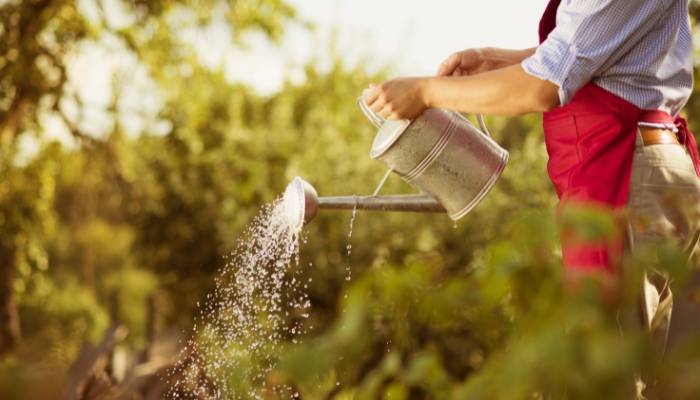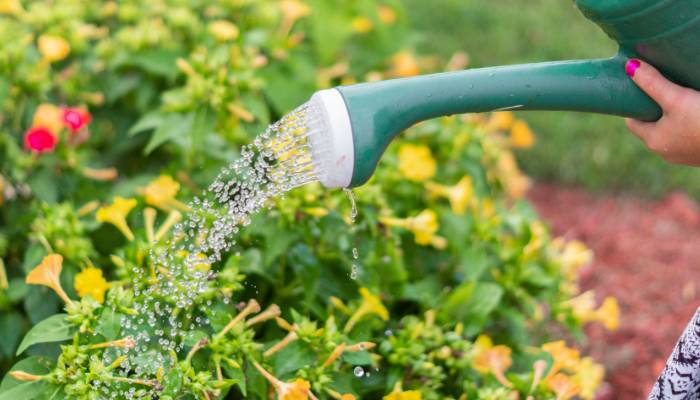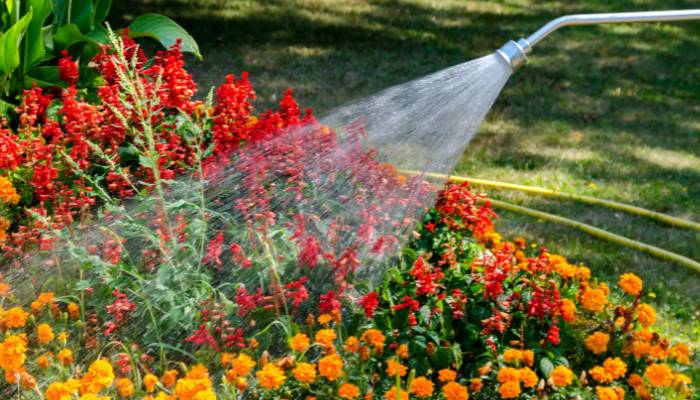Proper watering is crucial for a healthy garden than you might think! Learn the worst time to water your plants and how to do it right for a lush greenery.

Gardening is a wonderful hobby that can provide both physical and mental benefits. Whether you’re growing vegetables, flowers, or herbs, tending to plants can be a rewarding experience. However, to ensure that your plants grow and thrive, it’s important to water them at the right time.
Unfortunately, many gardeners make the mistake of watering their plants at the wrong time of day, which can actually harm their plants. Find out the wrong time to water plants and tips on how to water them properly for optimal growth and health.
The Worst Time to Water Plants
The worst time to water plants is in the middle of the day when the sun is at its highest and the temperature is at its hottest. When you water your plants during this hot time, the water droplets can act as tiny magnifying glasses, intensifying the sun’s rays and burning the leaves and roots of the plant.
Additionally, the water in the afternoon may evaporate quickly before it has a chance to reach the roots, leaving the plant thirsty and parched. Watering in the midday heat can also lead to fungal diseases, as the moisture can linger on the leaves and create the perfect environment for fungi to thrive.
The best time to water your plants is either early in the morning or late afternoon when the sun is lower, the temperature is cooler, and the water has a chance to soak into the soil and reach the roots without the risk of evaporation.
To avoid midday watering, you can set up a drip irrigation system that waters the plants slowly and steadily throughout the day or use a watering can or hose to water at the base of the plant instead of from above.
By staying away from midday watering, you can ensure better plant care helping them grow strong and healthy while avoiding unnecessary damage.

Other Worst time to water plants
While midday is the worst time to water for most type of plants, there are other times when watering can also be harmful to your plants. For example:
Late in the evening : It is also not a good idea to water the plants at night. This is because the absence of sun at night makes it difficult to remove excess water from opening on leaves called ‘stomata’. The extra water, hence, can let in harmful things that make the plant sick.
Freezing temperatures: During cold weather, watering your plants can lead to the water freezing and damaging the plant cells. To avoid this, wait until the temperature rises above freezing before watering.
Right before a storm: If there’s a storm coming, it’s best to avoid watering your plants beforehand. Heavy rain can cause the soil to become waterlogged, which can cause root rot in your plants.
During high winds: Watering your plants during high winds can cause the water to blow away, leaving your plants thirsty and parched.
To avoid these times, it’s best to keep an eye on the weather forecast and water your plants in the garden when conditions are optimal. Using a rain gauge to measure rainfall can also help you determine when your plants need additional watering.
Additionally, it’s important to check the soil moisture level regularly to ensure that your plants are getting the right amount of water. A good rule of thumb is to water deeply and infrequently rather than frequently and shallowly. This allows the water to reach the roots and encourages deeper, stronger root growth.

How to Water Plants Properly
Proper watering is crucial to the health and growth of your garden and indoor plants. Here are some tips to help you water your plants properly:
Water deeply and infrequently: Rather than watering your plants frequently and shallowly, it’s better to water them deeply and less often. This encourages the roots to grow deeper and stronger, making your plants more resilient.
Water at the base of the plant: Watering from above can cause the water to evaporate before it reaches the roots. Instead, use a watering can or hose to water at the base of the plant, allowing the water to soak into the soil and reach the roots.
Use the right amount of water: Overwatering can be just as harmful as underwatering. A good way to determine whether your plants need water is to stick your finger into the soil. If it feels dry up to your first knuckle, it’s time to water.
Water at the right time of day: Water your outdoor and indoor plants in the morning or in the evening when the sun is lower and the temperature is cooler.
Consider using a drip irrigation system: Drip irrigation systems deliver water slowly and steadily, reducing the risk of evaporation and ensuring that your plants receive a consistent supply of water.
Avoid getting water on the leaves: Getting water on the leaves can lead to fungal diseases, so it’s best to water at the base of the plant.
Wrapping Up
The worst time to water your plants in the context of plant care is watering at the wrong time of day, as it can do more harm than good. To water your plants properly, it’s important to water deeply and infrequently, water at the base of the plant, use the right amount of water, water at the best times, consider using a drip irrigation system, and avoid getting water on the leaves.
Sandra Hernandez is a freelance content writer and journalist. She loves to share her posts across different topics.
